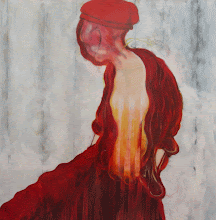
The methodology of registering impacts is up for discussion. The positioning of these 10 impacts has been acheived by setting a random sequence of 180 numbers using Macromedia 'Director'.
The result was as follows:- Vertical column was selected and the first 10 numbers used. 180 positions have been allocated. For sculpture construction purposes this number should remain constant.
111, 90, 29, 91, 168, 31, 115, 32, 90 & 131





JCB e-mailed this (she is probably right)
ReplyDelete"I had never seen a picture of the 'Fat Man' bomb - or possibly had
forgotten it - but this was soon remedied by consulting google image.
This is another bio/mechanical hybrid like Razor DNA, the kind I find
most powerful. I would like to think of others of this type.
Those damned random impacts! I understand the 180 positions on the
stave, using both the lines and the spaces in between. I assume the
numbers are applied consecutively to these positions and that one
would start counting from the first column on the left hand side of
the stave. Whether you start at the top or bottom of this column,
surely the position of '90', [which gives impacts 3 and 10], would be
the last position on the LEFT hand side of the fulcrum, ie. completing
the first half. You have placed it in the first position on the RIGHT
hand side. Similarly, whether one starts counting up or down the first
column, '32', [impact 9], would be on the middle stave in the fourth
column, not the fifth. In fact I get none of the impacts in the same
place as you. I'm sorry, I don't get it."
The real problem is how to 'scale' the forces of impact. A metal worker could use the following:-
ReplyDeleteBall Hammer.
Claw hammer.
Club Hammer.
Mallet.
Any ideas on this?
Continuing the theme of random numbers, the throw of a dice could determine the force of impact at each site on a scale of 1 to 6. Where two impacts coincide the force would be doubled.
ReplyDeleteTo deliver a standard unit of force on impact, a heavy metal 'bob' could be swung like a pendulum to strike the stave bars when held temporarily in the vertical plane. Suspended from a fixed point above the stave, the greater the angle from vertical at the start of the bob's swing, the greater the force of impact. [Calibration at 15 degree intervals would provide the scale of 1 to 6.] Alternatively, the angle could remain constant, and the uniform bows repeated the number of times determined by the dice.
The profile of the leading edge of the bob would determine the shape of the distortion to the bar at the impact site. The stave bars on either side of the impact site would need to be supported during blows, otherwise a general bowing will occur and individual impacts would not be distinguished.
Perhaps preferable to random impacts on a 'neutral' stave, would be a system which can hold information and reveal connections as it evolves.
ReplyDeleteI would like to revive an earlier idea of austinjohn's, according to which the impacts on the stave correspond to the 'blows', emotional, psychological or physical, which we receive during our lives. Each stave could represent a different life span, eg.30, 40, 50, 60, 70 years, depending on the ages of the contributors. Each person selects ten major blows, and gives them a severity rating of 1 to 6. When superimposed, common periods of greatest vulnerability may emerge, as well as varying perspectives depending upon current age.
Psychological and emotional damage can contribute to an individual's predisposition towards the cruelty, corruption, greed etc. which underlie our toxic world.
Another idea - each of the five bars of the stave represents a 100 year historical timeline: 1909 - 2009
ReplyDelete1) A century of wars from 1914/18 to Iraq.
2) Major disease epidemics from the post World War 1 Asian flu (which killed more people than trench warfare), to HIV Aids.
3) Man made catastrophes - nuclear explosions, Chernobyl, Bhopal etc
4) Natural disasters, volcanic eruptions, floods, earthquakes, tsunamis.
5) I've run out - perhaps animals becoming extinct, or approaching extinction, (entering Red Data Book category).
The scale of impact, (for bars 1 to 4), would be related to number of deaths. Over the century have more people been killed by natural or man-made disasters? I think almost certainly the latter - by what factor? There is potential for other cross connections to emerge.
This scheme would need much research and collaboration, my own grasp of history being totally inadequate.
I think we could create an amalgamation of all these ideas by overlaying the results from each methodology. I'm a believer of the notions of 'flux'. Our perception also changes as does objectivity. I don't think a muliple methodology is over complex. Socrates (Plato) started the rot by oversimplyfing and de-mystifying.Only now are we beginning to revisit 'complexity'.
ReplyDelete